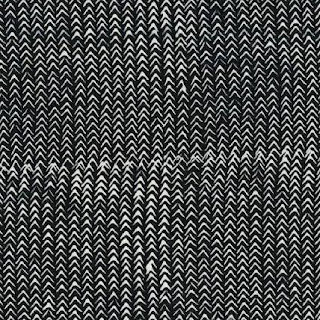Sonic Weave

“Now I will do nothing but listen.”
Sonic Weave is intended to create an interactive sound landscape that surrounds the participants and envelopes them in a space of changing dimensions.
How can sound contribute to a deeper understanding of our environment? I want to research the impact upon the social and sonic environment. Human identity through perception of sound, sonic textures that emerge as a background sound. Related to everyday experiences, the power of sound plays a crucial role in creating the imagination. Hearing and listening to different motions teaches us attentive listening, which has a great impact in creating awareness and understanding our perspective.
Auditory explorations, new ways of knowledge. Sound can be used as an interdisciplinary research tool, understanding the emotional experiences of the space, surrounding through senses, beyond dimensions of the visible. Our body is a tool for sensory aural training.
A visual approach shadows hearing and listening abilities. Sound is an important element in helping listeners understand their environment. This acoustic environment is not only background sound or specific soundscapes; neither is it simply a question of noise pollution caused by traffic or daily activities. It is rather about understanding auditory experiences and discovering the sonic territories in urban space by listening and hearing.
Sound art as a participatory tool in urban research. Sonic objects in space, creating resonating memories. Interactive art, sounding and listening, sending and receiving which creates a sonic reflection.
The field of sound can be felt as a potential force. The field assumes meaning (potential force) and is transformed by the listener. The listener is also transformed by the field. If one is not listening in this expanded way then the form disappears into the background of consciousness—the field disappears—is meaningless, attention narrows, the potential lessens.
"Fields
and points, pins and pulses that result from the aforesaid translation
categories can be compared with the result a rug weaver has in mind
while weaving: the emergence of a multitude of patterns whose
composition and repetition structures are revealed with every stitch and
every fathom before our very eyes. The colour, shape and weaving
structure merge into one. In the same way, time-based layers of points,
pulses and pins create the sound fabric that are at the heart of
controlled morphological music. Such music derives its plasticity not
from moving passive sound bodies, as is customary, but from the synergy
brought about when sound particles, or electric pulses in our case, are
stacked and therefore engage in an interfering act. The resulting sounds
are not yet real, they only exist in a dream. "
~ Raaijmakers, Dick, CahierM, A Brief Morphology of Electric Sound.
~ Raaijmakers, Dick, CahierM, A Brief Morphology of Electric Sound.
Use volume and frequency to elicit resonant responses from each material present: walls, floors, humans. The music swells and recedes, though the sound has so possessed us, so deafened us that we cannot distinguish volume from vibrations within ourselves. Decibels stray, disorienting, into the realm of the percussive, the occupational, uniting place and body through sound. The spatially, anatomically aware approach celebrates architectural structures and our human structure while we exist in those architectures.
Playing with the bodies and brains, approaching our subliminal responses as malleable entities to be sculpted. In one psychophysiological technique, to trigger oto-acoustic emissions (OAEs) in the inner ear: the bones in the ear itself make these detectable sounds when prompted by specific hertz combinations. Shakes the walls, resounds inside the head, and wholly manipulates the listener. Each audience member becomes a host to the sounds projected from deliberately angled speakers; we vibrate as corporeal tuning forks.
We adopt delusional notions that the sound exists as part of our own experiences, rather than the other way around. Regardless of the ownership’s direction, we understand that it is all temporary. The music we hear will end, and we will never hear it again. The music occupies unreachable spaces within the body. To experience the installation, you must be present in a deliberately selected resonating space, and subject to the vibrations induced within your own body.
“Composing in space; composing for space; infinite space; expanding and diminishing forms; disintegration of forms; forms that interpenetrate; successive transformable and ephemeral forms to disappear and then reform in an infinite progression; flow of movement; simultaneous rhythm; instant present; arrested motion; slow motion; fragmented sound; the surface of the texture; exterior rhythm.”
The experience leaves you with a distorted recording of screeching, high-pitched tones, nearly unrecognizable from the cacophonic hypnosis unfurling, the induced chaos around and within. There’s something special about sound we cannot possess, that we can’t send or download or access. In this way, the sound ultimately owns you. You come to understand the true direction of power here: though you think the sound is part of you, you’re actually one resonating part of this sound transmission. You cannot pin down the memory, and each note is transient: when it passes it is gone forever. You can only string words together and say, 'I was there, it meant something'.
“An ambience can be defined as a time–space qualified from a sensory point of view. It relates to the sensing and feeling of a place. Each ambience involves a specific mood expressed in the material presence of things and embodied in the way of being of city dwellers. Thus, ambience is both subjective and objective: it involves the lived experience of people as well as the built environment of the place.”
~ Background Noise, Brandon Labelle

